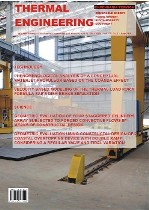IMPLEMENTATION AND TESTING OF A POWER MATRIX-BASED WAVE ENERGY CONVERSION MODEL AND THE EFFECT SIMULATED ON THE WAVE FIELD — CASE STUDY OF LAGUNA, SC, BRAZIL
DOI:
https://doi.org/10.5380/reterm.v18i1.67048Keywords:
wave energy, spectral modelling, TOMAWAC, WaVESCoM, F-2HBAbstract
Electrical energy has become an essential resource for mankind and, as the population and technological dependency grow, also does the electricity demand. This necessity boosted numerous studies which focus on clean and renewable energy sources. Ocean wave energy is one of the most environmentally friendly sources of energy since it does not emit pollutants to the atmosphere and does not produce harmful waste. Another positive point about ocean waves is that they are inexhaustible, therefore a power plant could, potentially, provide energy indefinitely. Hence the object of this study is to estimate the wave energy reduction caused by the presence of wave energy conversion (WEC) devices near the coastline of Laguna, Brazil. In order to study the coastal impact of a WEC farm, the third generation sea state model TOMAWAC was used to simulate the waves on the Southern Brazilian Shelf under two different conditions, with and without the presence of an array of WECs. The results show that the mean significant wave height in the blockaded area undergoes a slight drop, caused by the presence of the WECs, which do not appear in the other scenario. But this reduction of the significant wave height is negligible compared to the order of magnitude of the wave height itself.
Downloads
Published
How to Cite
Issue
Section
License
Direitos Autorais para artigos publicados nesta revista são do autor, com direitos de primeira publicação para a revista. Em virtude da aparecerem nesta revista de acesso público, os artigos são de uso gratuito, com atribuições próprias, em aplicações educacionais e não-comerciais.



